

The Big Lie of Strategic Planning. All executives know that strategy is important.

But almost all also find it scary, because it forces them to confront a future they can only guess at. Worse, actually choosing a strategy entails making decisions that explicitly cut off possibilities and options. An executive may well fear that getting those decisions wrong will wreck his or her career. The natural reaction is to make the challenge less daunting by turning it into a problem that can be solved with tried and tested tools. That nearly always means spending weeks or even months preparing a comprehensive plan for how the company will invest in existing and new assets and capabilities in order to achieve a target—an increased share of the market, say, or a share in some new one.
This is a truly terrible way to make strategy. In this worldview, managers accept that good strategy is not the product of hours of careful research and modeling that lead to an inevitable and almost perfect conclusion. Setting up a think tank: step by step. The title is misleading.
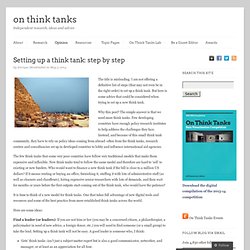
I am not offering a definitive list of steps (that may not even be in the right order) to set up a think tank. But here is some advice that could be considered when trying to set up a new think tank. Why this post? The simple answer is that we need more think tanks. Few developing countries have enough policy research institutes to help address the challenges they face. How to Execute a 15-Word Strategy Statement - Alessandro Di Fiore. By Alessandro Di Fiore | 8:00 AM April 29, 2014 There is no shortage of stories and anecdotes to illustrate how the best strategies can nearly always be reduced down to a brief but powerful statement and even more ink has been spilled describing the dangers of strategy statements that read like detailed action plans.
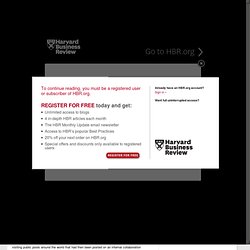
But how do you go about actually crafting — and using — a 15-word strategy statement? My approach is based on narrative techniques. Use existing frameworks wherever possible. By Arnaud, on July 6th, 2010 In a thorough problem-solving process you’ll have to build two logic trees: one “why” to find the root cause of your problem and one “how” to identify potential solutions.
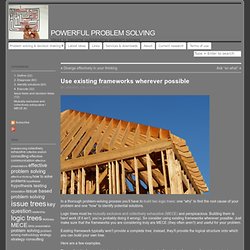
Logic trees must be mutually exclusive and collectively exhaustive (MECE) and perspicacious. Building them is hard work (if it isn’t, you’re probably doing it wrong). So consider using existing frameworks wherever possible. Just make sure that the frameworks you are considering truly are MECE (they often aren’t) and useful for your problem. Existing framework typically won’t provide a complete tree; instead, they’ll provide the logical structure onto which you can build your own tree.
Here are a few examples. The profitability framework helps understand how to improve the financial performance of a product or business unit. The Marketing 4P’s framework—also called marketing mix—summarizes all the attributes of a marketing concept. The McKinsey 7S Framework - Strategy Skills Training from MindTools. Ensuring That All Parts of Your Organization Work in Harmony Learn how to use the 7-S Framework, with James Manktelow & Amy Carlson.

How do you go about analyzing how well your organization is positioned to achieve its intended objective? This is a question that has been asked for many years, and there are many different answers. Some approaches look at internal factors, others look at external ones, some combine these perspectives, and others look for congruence between various aspects of the organization being studied. Ultimately, the issue comes down to which factors to study. While some models of organizational effectiveness go in and out of fashion, one that has persisted is the McKinsey 7-S framework.
The 7-S model can be used in a wide variety of situations where an alignment perspective is useful, for example, to help you: The McKinsey 7-S model can be applied to elements of a team or a project as well. The Seven Elements Let's look at each of the elements specifically: Corporate Development 101: What Every Startup Should Know. The following is a guest post by Chris Sheehan.
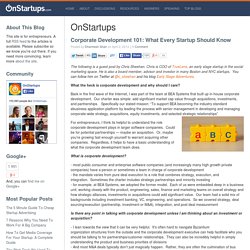
Chris is COO of TrueLens, an early stage startup in the social marketing space. He is also a board member, advisor and investor in many Boston and NYC startups. You can follow him on Twitter at @c_sheehan and his blog Early Stage Adventures. What the heck is corporate development and why should I care? Back in the first wave of the Internet, I was part of the team at BEA Systems that built up in-house corporate development. For entrepreneurs, I think its helpful to understand the role corporate development plays in larger software companies. Designing a Great Customer Experience Strategy. Apple founder Steve Jobs said when announcing the iPhone in 2007, “Every once in awhile a revolutionary product comes along that changes everything.”
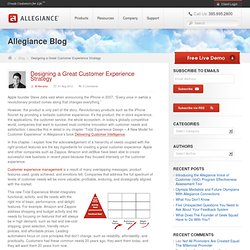
However, the product is only part of the story. Revolutionary products such as the iPhone flourish by providing a fantastic customer experience. It’s the product, the in-store experience, the applications, the customer service, the whole ecosystem. In today’s globally competitive world, companies that want to succeed must combine innovation with customer needs and satisfaction.